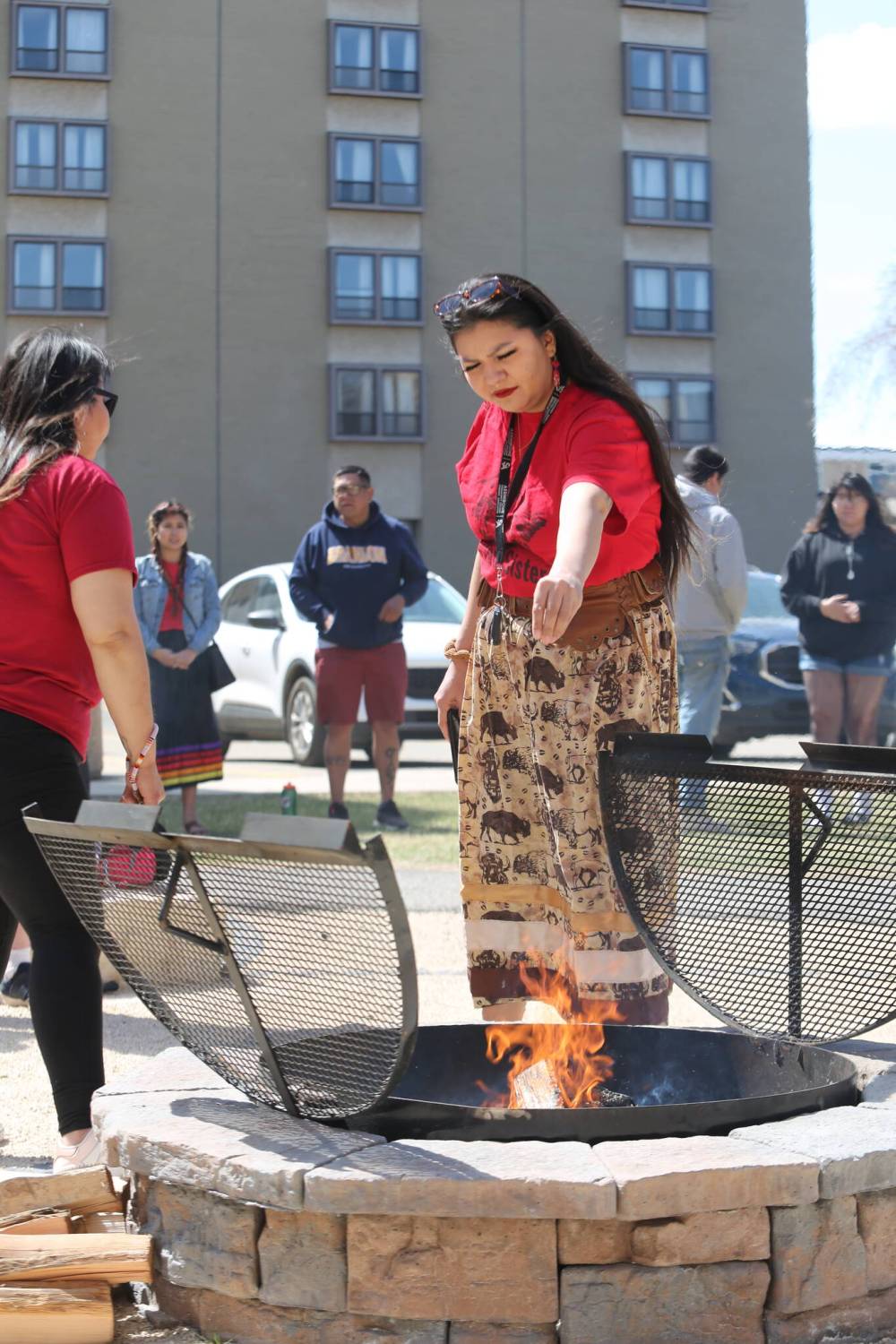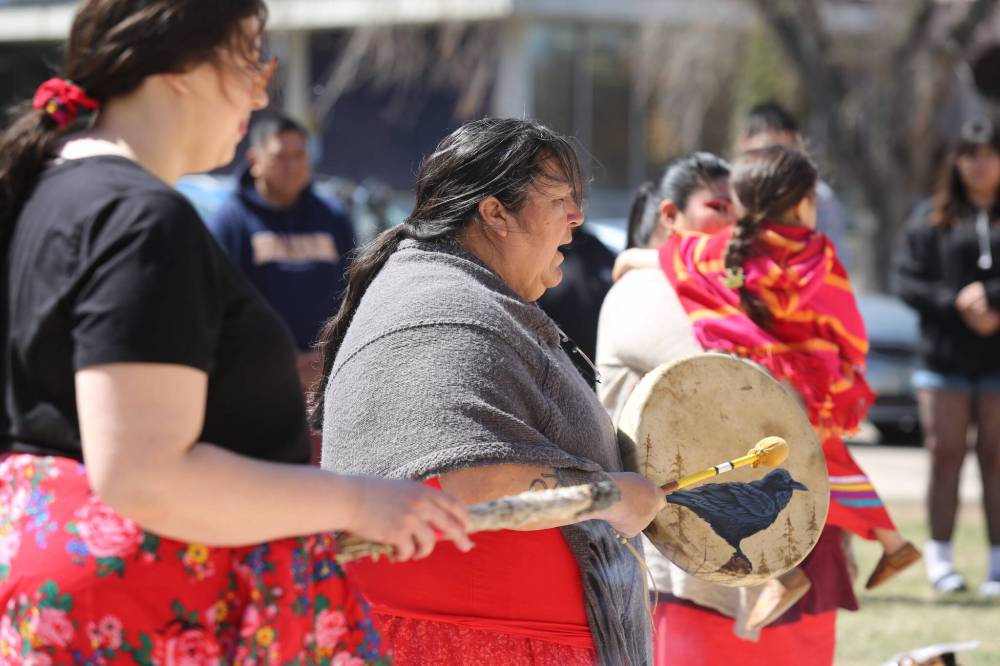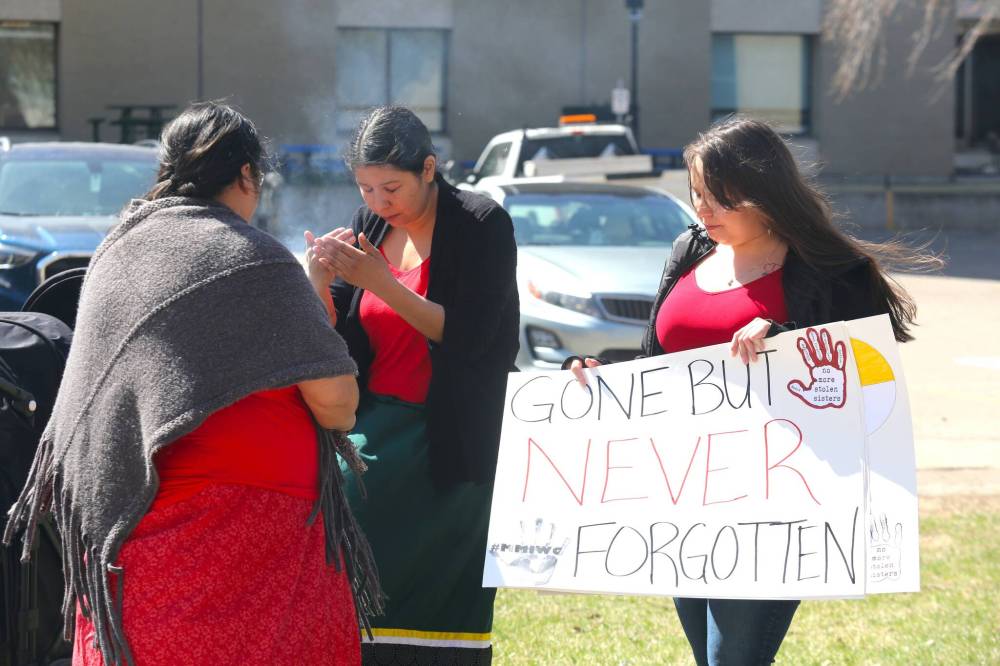Red Dress Day keeps MMIWG2S crisis in spotlight
Advertisement
Read this article for free:
or
Already have an account? Log in here »
We need your support!
Local journalism needs your support!
As we navigate through unprecedented times, our journalists are working harder than ever to bring you the latest local updates to keep you safe and informed.
Now, more than ever, we need your support.
Starting at $15.99 plus taxes every four weeks you can access your Brandon Sun online and full access to all content as it appears on our website.
Subscribe Nowor call circulation directly at (204) 727-0527.
Your pledge helps to ensure we provide the news that matters most to your community!
To continue reading, please subscribe:
Add Brandon Sun access to your Free Press subscription for only an additional
$1 for the first 4 weeks*
*Your next subscription payment will increase by $1.00 and you will be charged $20.00 plus GST for four weeks. After four weeks, your payment will increase to $24.00 plus GST every four weeks.
Read unlimited articles for free today:
or
Already have an account? Log in here »
Hey there, time traveller!
This article was published 06/05/2023 (922 days ago), so information in it may no longer be current.
A strong Prairie wind couldn’t extinguish the ceremonial fire that was lit at Brandon University on Friday afternoon to commemorate Red Dress Day, which is meant to bring attention to missing and murdered Indigenous women, girls and gender-diverse people.
This year’s outdoor ceremony featured a couple dozen participants from the surrounding campus and beyond, who gathered to honour the memories of those who have been lost to gendered violence and raise awareness for what can be done to address this national crisis.
“We think of the families and the communities at this time,” said Cree knowledge keeper Susie McPherson-Derendy, who led Friday’s event with a smudging ceremony and a women’s warrior song.

“For those of us who lost a relative, a sister, an aunt, a cousin, a friend, a mother and a community member, we lift up our hearts and our prayers and our thoughts … to give thanks for this time together.”
According to the Native Women’s Association of Canada, more than 4,000 Indigenous women and girls have disappeared or been lost to violence over the past three decades, although incomplete data makes the true number difficult to determine.
This estimate far exceeds a 2014 report from the RCMP which put the tally at 1,181 murdered and missing Indigenous women between 1980 and 2012.
Research from Statistics Canada, meanwhile, highlights that the homicide rate for Indigenous women and girls, throughout 2001-2015, was nearly six times higher than that for non-Indigenous females.
Following her opening prayer, McPherson-Derendy gave attendees the opportunity to speak about their own relationship to this systemic issue, which touches most Indigenous families given its sheer prevalence.
Assiniboine Community College communications student Julia Brandon used the forum to talk about her sister, who died four years ago after being severely beaten.
Brandon also highlighted the societal barriers she personally encountered growing up, which could have easily led to her being one of the many names that are brought up every Red Dress Day.

Cree knowledge keeper Susie McPherson-Derendy sings a women's warrior song during Brandon University's Red Dress Day ceremony on campus. (Kyle Darbyson/The Brandon Sun)
“Addiction is very hard. It stems from the way you felt about yourself at residential schools,” she said.
“I didn’t get an education there. I was a high-risk woman myself, because I liked to drink and have addictions, cigarettes, marijuana, crack cocaine … that was part of my life, but that’s not who I am today.”
Brandon said reconnecting with her Indigenous language was one of many methods she used to escape the spiral of addiction, and encourages other members of her home community, Waywayseecappo First Nation, to follow suit.
“I always told my relatives … learn your language. You’ll find what you’re looking for. I did.”
BU nursing student Denise Henry-Sinclair used Friday’s ceremony to raise awareness for her friend, Clara Bignell, whose mother Dianne has been missing since the spring of 2018.
Dianne Bignell was last seen in Thompson on May 17 of that year, with her jacket later being recovered near the Burntwood River that borders this northern Manitoba community.
Despite her daughter spearheading several search and rescue missions, Bignell’s body still hasn’t been recovered five years later, which continues to cause the family immense heartbreak.

Brandon University student Denise Henry-Sinclair uses Friday's Red Dress Day ceremony to raise awareness for Dianne Bignell, who went missing from Thompson in May 2018 and hasn't been seen since. (Kyle Darbyson/The Brandon Sun)
“Somebody there knows where she is, knows what happened to her, but they haven’t come forward,” Henry-Sinclair said on behalf of her friend.
“I offer this tobacco to the fire today and ask that the spirits help her mom find her way home and that the spirits are with my friend and her family.”
The first Red Dress Day (also known as the National Day of Awareness for Missing and Murdered Indigenous Women and Girls and Two-Spirit People) was held in 2010, with organizers taking inspiration from Métis artist Jaime Black and her installation that used empty red dresses to symbolize the lost lives of Indigenous women at the hands of violence.
Since then, Red Dress Day has become an annual national affair that takes the form of marches, vigils and protests, where participants display red dresses to keep the MMIWG2S crisis in the public eye and put pressure on government officials.
Some of this public pressure has started to pay off, with the House of Commons unanimously backing a motion earlier this week to declare the deaths and disappearances of Indigenous women and girls a Canada-wide emergency.
The motion also calls for the funding of a new system designed to alert the public when someone goes missing.
Despite these advancements, Brandon resident Ashley McKay said events like Red Dress Day are still as important as ever in keeping this issue at the forefront, especially for Indigenous residents in Westman who need a reminder that they aren’t the only ones reeling from the death or unexplained disappearance of a loved one.

Cree knowledge keeper Susie McPherson-Derendy conducts a smudging ceremony during Friday's Red Dress Day ceremony at Brandon University. (Kyle Darbyson/The Brandon Sun)
“It’s just sad thinking about all the high numbers, but it’s nice to be able to come together like this by the fire,” McKay said.
» kdarbyson@brandonsun.com
» Twitter: @KyleDarbyson
